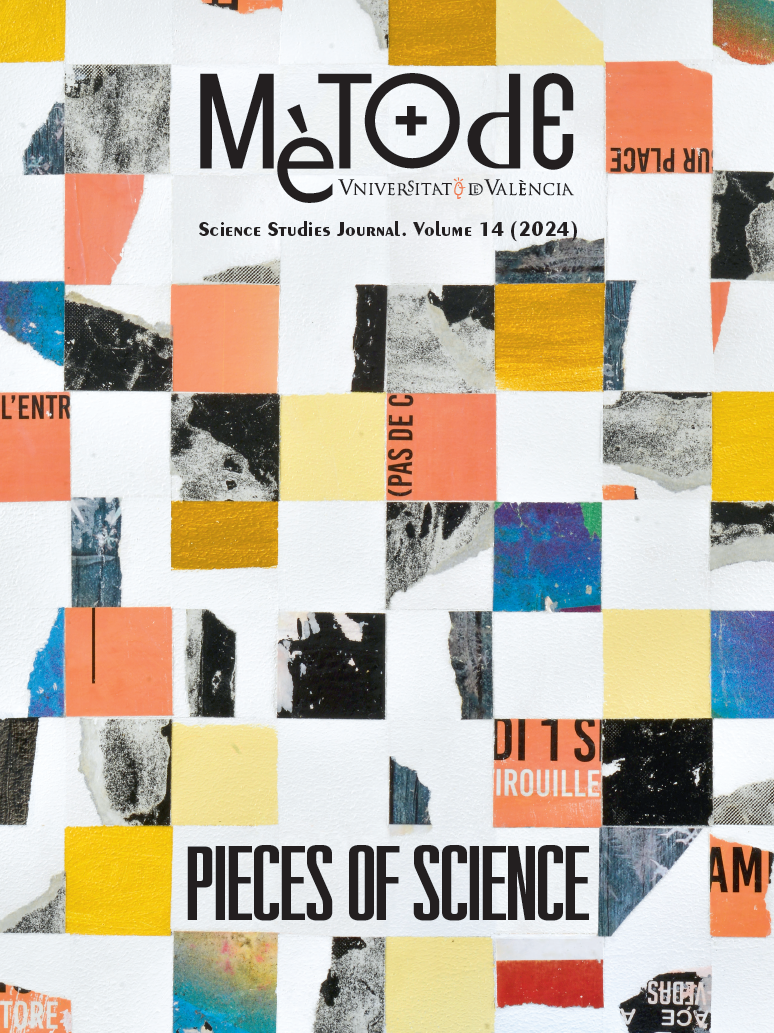Vertical science: New narratives in video and social media
DOI:
https://doi.org/10.7203/metode.14.26566Keywords:
dissemination, new narratives, science, online videos, social networks, vertical formats Abstract
Abstract
The presentation of science on social media has taken many forms over the years, from monologues and animations to live experiments. These new narratives are characterised by the use of everyday devices (generally portable devices such as mobile phones, laptops, or tablets) to leverage the potential of the digital environment (filters, stickers, GIFs, and animations, among others). The standardised design of current mobile phones, which usually have large touchscreen displays, has pushed the use of vertical formats to the forefront. Verticality has made it possible to change content not only from an aesthetic point of view, but also from a narrative one. Thus, this present article reviews the main changes resulting from this shift in terms of the way science is brought closer to audiences.
 Downloads
Downloads
 References
References
Anderson, H. (2018, 4 July). Social media apps are ‘deliberately’ addictive to users. BBC. https://www.bbc.com/news/technology-44640959
Byerly, H., Ferraro, P., Li, T., Messer, K., & Weigel, C. (2021). A story induces greater environmental contributions than scientific information among liberals but not conservatives. One Earth, 4(4), 545–552. https://doi.org/10.1016/j.oneear.2021.03.004
Digital Global Overview Report. (2023, 24 January). Digital 2023: Global Overview Report. Data Reportal. https://datareportal.com/reports/digital-2023-global-overview-report
Gabriel, Y. (2000). Storytelling in organizations: Facts, fictions, and fantasies. Oxford University Press. https://doi.org/10.1093/acprof:oso/9780198290957.001.0001
Gómez-Muñoz, X. (2022, 30 December). Verticalizar la mirada. Mundo Diners. https://revistamundodiners.com/verticalizar-la-mirada/
González, C. (2017). Pensamiento narrativo y acción. Tópicos del Seminario, 37, 103–123.
Guallar, J., & Traver, P. (2020). Curación de contenidos en hilos de Twitter. Taxonomía y ejemplos. Anuario ThinkEPI, 14, 1–11. https://doi.org/10.3145/thinkepi.2020.e14d06
IAB Spain. (2022). Estudio Anual Redes Sociales 2022. https://iabspain.es/estudio/estudio-de-redes-sociales-2022/
Mateos, M., & Herrera, L. (2021). Narrativa de la Animación 2D en formato vertical. In I. Carrillo, L. Hernández, M. Guerrero, & E. Mancilla (Coords.). Teoría y Práctica del Diseño (pp. 92–115). Universidad Autónoma de San Luis Potosí.
Morcillo, J., Czurda, K., & Trotha, C. (2016). “Typologies of the popular science web video”. Journal of Science Communication, 15(4), 1–32. https://doi.org/10.22323/2.15040202
Sidorenko-Bautista, P., Herranz, J., & Cantero, J. (2020). Use of new narratives for COVID-19 reporting: From 360º videos to ephemeral TikTok videos in online media. Tripodos, 1(47), 105–122. https://doi.org/10.51698/tripodos.2020.47p105-122
Sora, C. (2016). Temporalidades digitales. Análisis del tiempo en los new media y las narrativas interactivas. UOC Press.
Villaespesa, E., & Wowkowych, S. (2020). Ephemeral storytelling with social media: Snapchat and Instagram stories at the Brooklyn Museum. Social Media + Society, 6(1), 1–13. https://doi.org/10.1177/2056305119898776
Yang, S., Zhao, Y., & Ma, Y. (2019). Analysis of the reasons and development of short video application – Taking Tik Tok as an example. In Jia Xu (Ed.), 9th International Conference on Information and Social Science (ICISS 2019) (pp. 340–343). Francis Academic Press. https://doi.org/10.25236/iciss.2019.062
Downloads
Additional Files
Published
How to Cite
-
Abstract430
-
Portada (Español)3
-
PDF221
Issue
Section
License
Copyright (c) 2023 CC BY-NC-ND 4.0

This work is licensed under a Creative Commons Attribution-NonCommercial-NoDerivatives 4.0 International License.
![]()
All the documents in the OJS platform are open access and property of their respective authors.
Authors publishing in the journal agree to the following terms:
- Authors keep the rights and guarantee Metode Science Studies Journal the right to be the first publication of the document, licensed under a Creative Commons Attribution-NonCommercial-NoDerivatives 4.0 International License that allows others to share the work with an acknowledgement of authorship and publication in the journal.
- Authors are allowed and encouraged to spread their work through electronic means using personal or institutional websites (institutional open archives, personal websites or professional and academic networks profiles) once the text has been published.





